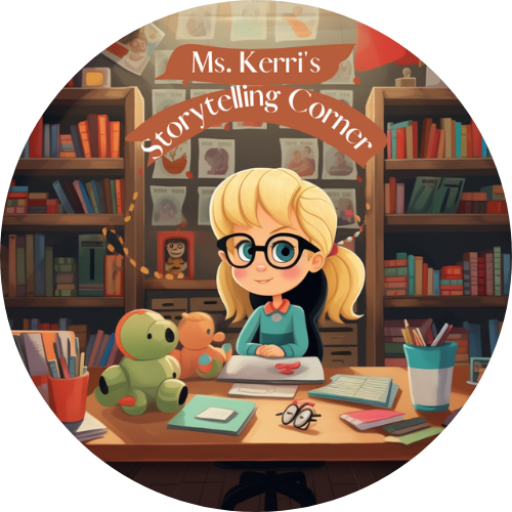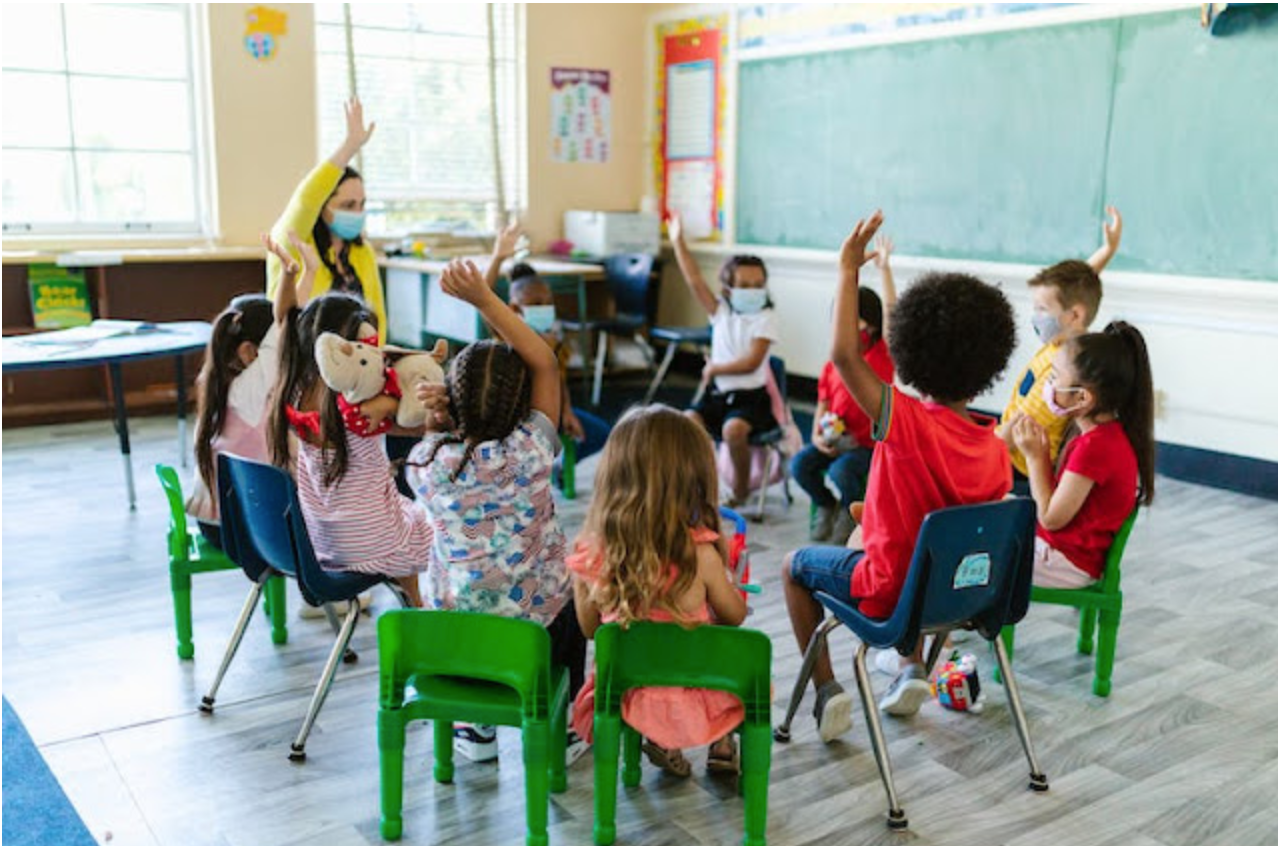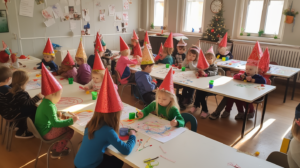Become an Expert at Reading Children’s Books Aloud
Introduction
Reading to children is not just a means of entertainment, but also a crucial step in their development. As parents, teachers, or caregivers, we all want to make sure that we are providing the best reading experience for our little ones. However, reading to children is not as simple as it may seem. It requires a certain level of skill and technique to truly engage young minds and make the stories come alive. In this blog post, we will explore how to read children’s books aloud and become an expert at captivating your audience with the magic of storytelling.
Article Overview
- Understanding the Importance of Reading Aloud to Your Child:
- Explore the significance of reading aloud for child development.
- Benefits for language skills, cognitive abilities, and emotional intelligence.
- Creating a reading routine and its long-term academic impact.
- Finding the Right Balance: Reading to Your Child Even When You’re Busy:
- Strategies for fitting read-aloud time into a busy schedule.
- Making the most of bedtime stories and utilizing pockets of time.
- Discovering Engaging Children’s Books for Storytime:
- Inspirational list of captivating children’s books.
- Explore classics, new releases, and various genres for storytime.
- Enhancing Your Child’s Reading Skills Through Read-Aloud Techniques:
- Effective techniques for improving reading skills during read-aloud sessions.
- Encouraging comprehension through questions and modelling fluent reading.
- The Art of Animated Reading:
- Bringing Children’s Books to Life:Secrets to animated reading: using character voices and gestures.
- Making storytelling a magical experience for children.
- A List of Engaging Books to Read Aloud:
- Curated list of books perfect for read-aloud sessions.
- Recommendations for different age groups to keep kids engaged.
- Embracing Read-Aloud Sessions as Bonding Time:
- Transforming read-aloud sessions into bonding experiences.
- Creating a cozy reading environment, fostering discussions, and making lasting memories.
- Conclusion:
- Recap the importance of reading aloud to children.
- Reinforce the benefits of incorporating read-aloud sessions into daily routines.
- Encourage the joy of storytelling with children.
Understanding the Importance of Reading Aloud to Your Child
Reading aloud to your child is not just a pleasant activity; it plays a crucial role in their development. Numerous studies have shown that children who are read to regularly have better language skills, higher cognitive abilities, and improved emotional intelligence. When you read to your child, you are not only introducing them to the wonderful world of stories but also helping them develop a love for reading that will benefit them throughout their lives.
Children’s books are designed to be read aloud, with their engaging stories, colorful illustrations, and rhythmic language. Through read-aloud sessions, children are exposed to a variety of vocabulary, sentence structures, and storytelling techniques. They learn to recognize and understand the emotions and perspectives of different characters, fostering empathy and emotional intelligence.
Additionally, reading aloud to your child creates a special bonding time between you and your little one. It allows for shared experiences, discussions about the story, and the opportunity to create lasting memories together.
Preschoolers and kindergartners benefit greatly from read-aloud sessions as they develop important pre-reading skills, such as print awareness and phonological awareness. They begin to recognize letters and sounds, laying the foundation for future reading success.
%203.pdf%20(Billboard%20(Landscape)).png)
Finding the Right Balance: Reading to Your Child Even When You’re Busy
Life can get busy, especially for parents. Between work, household chores, and other responsibilities, finding time to read to your child may seem challenging. However, with a little creativity and planning, you can still make read-aloud sessions a regular part of your routine.
One strategy is to look for pockets of time throughout the day that can be dedicated to reading. Maybe it’s during breakfast or right before bedtime. Make these moments special by setting aside distractions and creating a cozy reading environment. Even just 15 minutes of uninterrupted reading time can make a big difference in your child’s development.
Another option is to make the most of bedtime stories. Instead of rushing through the routine, use this time to dive into a captivating children’s book. Dim the lights, cuddle up with your child, and let the story transport you both to another world. Bedtime stories not only provide an opportunity for connection but also promote a calm and soothing environment that can help your child unwind before sleep.
If your schedule is truly packed, consider incorporating read-alouds into other activities. For example, during car rides, you can listen to audiobooks or read along with your child using picture books with large, colorful illustrations. This way, you can engage your child in the joy of reading even when you’re on the go.
Remember, consistency is key. Even if you can only squeeze in a few minutes of reading time each day, it will still have a positive impact on your child’s development. So, don’t stress about finding large blocks of time. Instead, focus on making the most of the small moments and creating a reading habit that works for your family.
Build phonics and reading skills through read alouds! Click HERE to learn more!
Discovering Engaging Children’s Books for Storytime
When it comes to storytime with your child, finding the right children’s books is key to capturing their attention and sparking their imagination. Luckily, there is a wide variety of engaging children’s books to choose from that are sure to make storytime a memorable experience.
One great resource for finding children’s books is your local library. Librarians are experts in children’s literature and can recommend books that are age-appropriate and engaging. They can also help you discover new authors and illustrators that your child may enjoy. Many libraries also offer storytime sessions where a librarian reads aloud to a group of children, providing a fun and interactive experience for your child.
Another option is to ask for recommendations from other parents, teachers, or caregivers. They can share their favorite children’s books and provide insights on what makes them engaging. Online communities and forums dedicated to children’s books are also great places to find recommendations and connect with other parents who share your interest in reading with their children.
Additionally, bookstores often have sections dedicated to children’s books. Take your child to a bookstore and let them browse the shelves to see what catches their eye. Encourage them to pick out books based on their interests, whether it’s dinosaurs, princesses, or outer space. By involving your child in the selection process, you are fostering their love for reading and empowering them to make choices about their own reading material.
.pdf%20(Billboard%20(Landscape)).png)
Enhancing Your Child’s Reading Skills Through Read-Aloud Techniques
Reading aloud to your child is not just about storytelling; it’s also an opportunity to enhance their reading skills. By using specific techniques during read-aloud sessions, you can help your child become a confident and skilled reader.
One technique is asking open-ended questions about the story as you read. For example, you can ask your child what they think will happen next or how a character might be feeling. This encourages them to think critically and engage with the text, improving their comprehension skills.
Another technique is modeling fluent reading. As you read, emphasize punctuation, vary your tone of voice, and read at a comfortable pace. Your child will naturally pick up on these reading skills and begin to apply them in their own reading.
You can also encourage your child to participate in the reading by allowing them to take turns reading aloud. This builds their confidence and fluency, and gives them a sense of ownership over the story.
Additionally, using gestures and facial expressions can bring the story to life and make it more engaging for your child. For example, you can use different voices and hand movements to portray different characters, making the story more exciting and immersive.
The Art of Animated Reading: Bringing Children’s Books to Life
Reading children’s books aloud is not just about reciting the words on the page; it’s about bringing the story to life through animated reading. This technique takes children’s stories to a whole new level, captivating young minds and immersing them in the magical world of literature.
One of the key aspects of animated reading is using different voices for the characters. By giving each character a unique voice, you can help your child distinguish between them and truly understand their individual personalities. You can deepen your child’s engagement by incorporating gestures and facial expressions that match the emotions and actions of the characters. This adds a visual element to the storytelling experience and allows your child to connect more deeply with the story.
Another way to bring children’s books to life is by using props or puppets to represent the characters. This adds a tactile element to the reading experience and helps your child visualize the story in a more interactive way. You can also encourage your child to participate by having them act out certain scenes or take on the role of a character. This not only enhances their understanding of the story but also makes it a fun and memorable experience.
A List of Engaging Books to Read Aloud
Are you looking for some captivating books to read aloud to your little one? Look no further! We have compiled a list of engaging children’s books that are perfect for read-aloud sessions. These books are sure to capture your child’s imagination and create unforgettable storytime moments.
1. “The Very Hungry Caterpillar” by Eric Carle: This classic children’s book takes readers on a journey of a caterpillar’s transformation into a beautiful butterfly. With its vibrant illustrations and interactive pages, it’s no wonder this book has been a favorite for generations.
2. “Where the Wild Things Are” by Maurice Sendak: This imaginative tale follows a young boy named Max as he journeys to a land of wild creatures. The vivid illustrations and lyrical prose make this book a joy to read aloud.
3. “Goodnight Moon” by Margaret Wise Brown: This timeless bedtime story has been beloved by children and parents alike for decades. The simple, rhythmic text and cozy illustrations make it the perfect book to wind down with at the end of the day.
4. “The Gruffalo” by Julia Donaldson: Join a clever mouse as he outwits dangerous predators in the deep, dark woods. This rhyming story is filled with suspense and humor that will keep your child engaged from beginning to end.
5. “The Giving Tree” by Shel Silverstein: This heartwarming tale teaches valuable lessons about love and selflessness. Share this touching story of a boy and a tree and watch your child’s empathy and compassion grow.
These are just a few examples of the many incredible children’s books out there. Remember, the most important thing is to choose books that align with your child’s interests and age level. So grab a cozy spot, cuddle up with your little one, and embark on a magical reading adventure together. Happy reading!

Embracing Read-Aloud Sessions as Bonding Time
Reading aloud to your child is not only an opportunity to immerse them in the wonderful world of children’s stories; it’s also a chance to create special bonding moments. Embracing read-aloud sessions as bonding time can strengthen your connection with your child and create memories that will last a lifetime.
During read-aloud sessions, you and your child can snuggle up together in a cozy reading nook or cuddle on the couch. Make it a habit to set aside distractions and create a calm and inviting environment for reading. This dedicated time together allows you to focus solely on each other and the magic of storytelling.
Engage your child by asking open-ended questions about the story, encouraging them to share their thoughts and feelings. Foster discussions about the characters, the plot, and the lessons learned. These conversations not only deepen their understanding of the story but also strengthen your bond as you explore the world of children’s books together.
As you read aloud, incorporate animated reading techniques like using different voices for the characters, using gestures and facial expressions, and even acting out scenes. This brings the story to life and makes it an interactive and exciting experience for both you and your child.
Conclusion
In today’s busy world, finding time to read to your child may seem like a challenge. However, by understanding the importance of reading aloud and making it a priority, you can create lasting benefits for your child’s development. Reading aloud to children not only improves their language skills, cognitive abilities, and emotional intelligence but also establishes a positive association with books and reading that can last a lifetime.
By finding the right balance in your schedule, you can make read-aloud sessions a regular part of your routine. Whether it’s during breakfast, bedtime, or car rides, even just a few minutes of uninterrupted reading time can have a positive impact. Remember, consistency is key.
Discovering engaging children’s books is another crucial aspect of read-aloud sessions. From classics to new releases, there are countless options that are sure to captivate your child’s imagination. Consider your child’s age and interests when choosing books, and involve them in the selection process to foster their love for reading.
Enhancing your child’s reading skills through read-aloud techniques is also important. By asking questions, modeling fluent reading, and incorporating gestures and facial expressions, you can make storytelling come alive and enhance your child’s comprehension and fluency.
Read-aloud sessions also provide a special opportunity for bonding with your child. By creating a cozy reading environment, fostering discussions, and making memories, you can strengthen your connection and create a love for reading that will last a lifetime.
Frequently Asked Questions
1. How do I choose appropriate books for my child’s age group?
When selecting children’s books for read-aloud sessions, it’s important to consider your child’s age and developmental level. Look for books that align with their interests and abilities. For younger children, board books or picture books with simple illustrations and rhyming text are ideal. Preschoolers and kindergartners may enjoy longer stories with more complex plots and characters. As your child grows, introduce chapter books that can be read in installments. Remember to involve your child in the book selection process and encourage them to choose books that spark their curiosity and imagination.
2. How do I handle distractions during read-aloud sessions?
Distractions are a common challenge during read-aloud sessions, especially if you have a busy household. To minimize distractions, create a quiet and cozy reading environment. Turn off electronics, choose a comfortable spot, and eliminate any unnecessary noise. If interruptions still occur, use them as teaching moments. Pause the story and address the distraction calmly and kindly. By modeling patience and understanding, you can teach your child the importance of focusing during storytime.
3. How do I encourage a reluctant reader to participate in read-aloud sessions?
If your child is hesitant to participate in read-aloud sessions, try to make it a fun and engaging experience. Let them choose books that interest them and offer incentives for their involvement, such as stickers or a special treat. Make the reading environment comfortable and inviting. Encourage their participation by asking open-ended questions, allowing them to turn the pages, or even acting out certain scenes. Be patient and supportive, and over time, your reluctant reader may develop a love for read-aloud sessions.


Ms. Kerri’s Corner provides a exciting virtual space for preschool learning. Through a variety of engaging activities, she exposes young minds to early math, literacy, science and social-emotional skills in a developmentally appropriate way. Centers for blocks, art, books and music allow children to explore hands-on learning at their own pace. Guided lessons subtly introduce number sense, letter sounds and narrative thinking. Careful observation gives insight into each child’s progress across domains. Viewers are also invited to participate, reinforcing that their ideas are valued. By making learning fun yet purposeful, Ms. Kerri lays the groundwork for future academic success while fostering creativity and imagination. Her program offers preschoolers valuable screen-based learning experiences.




